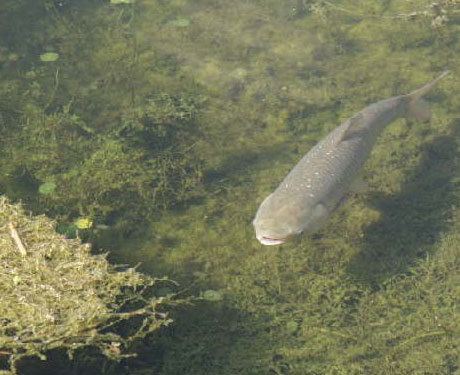Abbreviation CAFS Region served China | Headquarters Beijing | |
 | ||
Type Nonprofit research organization Location 14 locations across China | ||
The Chinese Academy of Fishery Sciences (CAFS) (simplified Chinese: 中国水产科学研究院; traditional Chinese: 中國水產科學研究院; Pinyin: Zhōngguó shuǐchǎn Kēxuéyánjiūyuàn) is a large fisheries research institute. It was founded in 1978 under the Ministry of Agriculture in the People's Republic of China. It is a leading research institution in China, active in almost all research areas to do with aquaculture and marine and freshwater fisheries.
Contents
CAFS sponsors the award winning international academic periodical Journal of Fishery Sciences of China. It has completed over 1,000 research projects, including a study on the aquaculture of the fleshy prawn Peneaus chinensis and the control of haemorrhage disease in grass carp, which won the National Scientific and Technological Progress First Prize. The institute has contributed significantly to China's aquaculture development.
Activities
Aquaculture has been pursued in China for at least 2,400 years. A tract by Fan Li in the fifth century BC details many of the ways carp were raised in ponds. The major carp species used traditionally in Chinese aquaculture are the black, grass, silver and bighead carp. In the 1950s, the Pearl River Fishery Research Institute of CAFS made a technological breakthrough in the induced breeding of these carps, which has resulted in a rapid expansion of freshwater aquaculture in China.
In the late 1990s, CAFS scientists developed a new variant of the common carp called the Jian carp. This succulent fish grows rapidly and has a high feed conversion rate. Over 50% of the total aquaculture production of carp in China has now converted to Jian carp.
The Chinese sturgeon is an endangered species native to China. It is strictly protected by the Chinese government, who have declared it a national treasure. The Yangtze River Fisheries Research Institute of CAFS is breeding sturgeons in captivity in an attempt to restore the river population before the species disappears. Some success has been claimed from artificial inducement for spawning and stream discharge for incubation. During the course of the project, 5 million fish bred in captivity have been released into the wild. In 2005, to mark the twentieth anniversary of China's efforts to protect the species, 10,000 sturgeon fry, 200 junior sturgeon and two adult fish were released into the Yangtze River at Yichang. However, in 2007, 14 young sturgeon were surveyed near the mouth of Yangtze compared with 600 the year before, causing concern that the battle was being lost in the crowded and polluted Yangtze River.
Structure
CAFS has its headquarters in Beijing. Across China, it operates nine fisheries research institutes and four fisheries resources enhancement stations.
